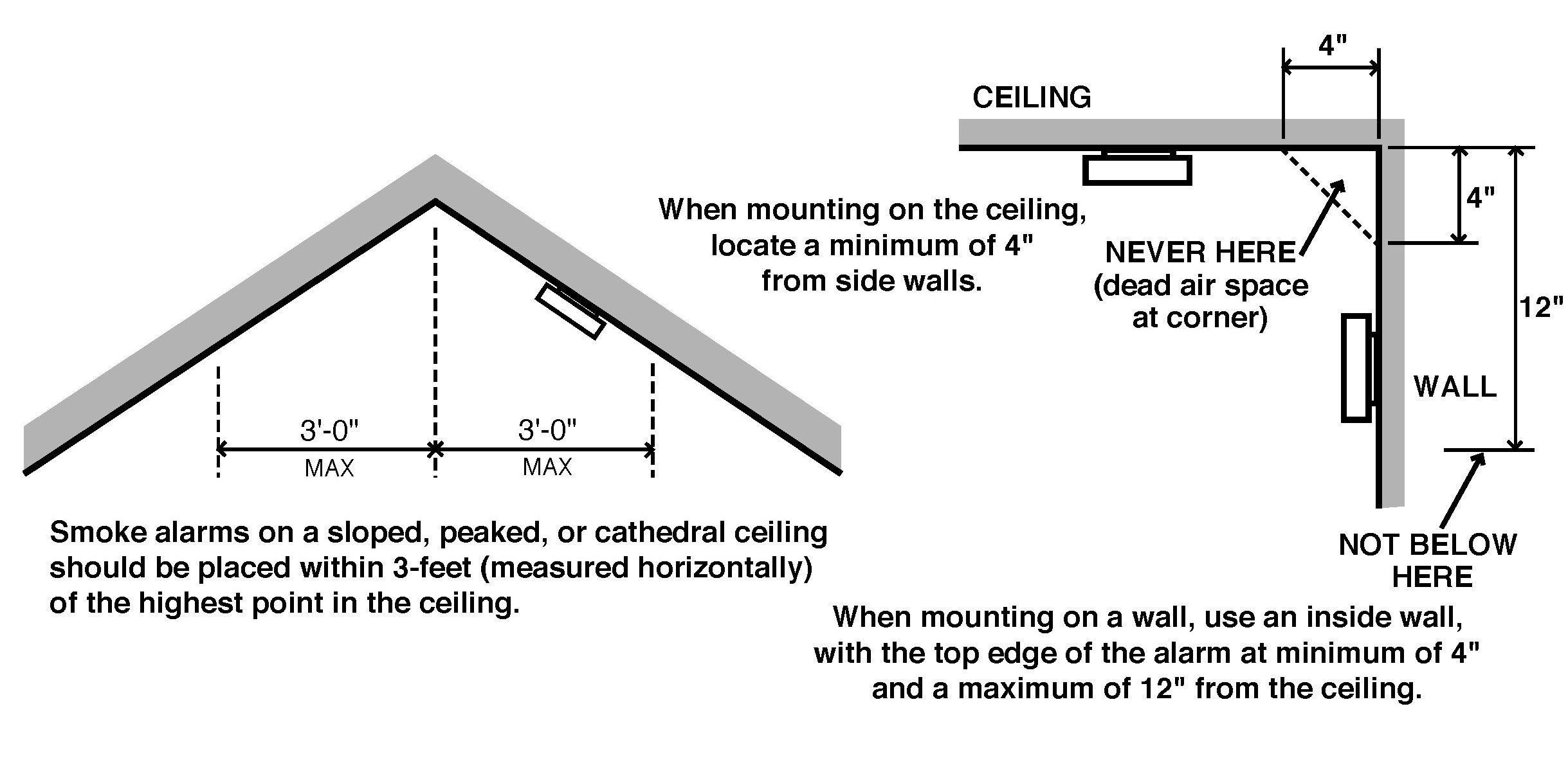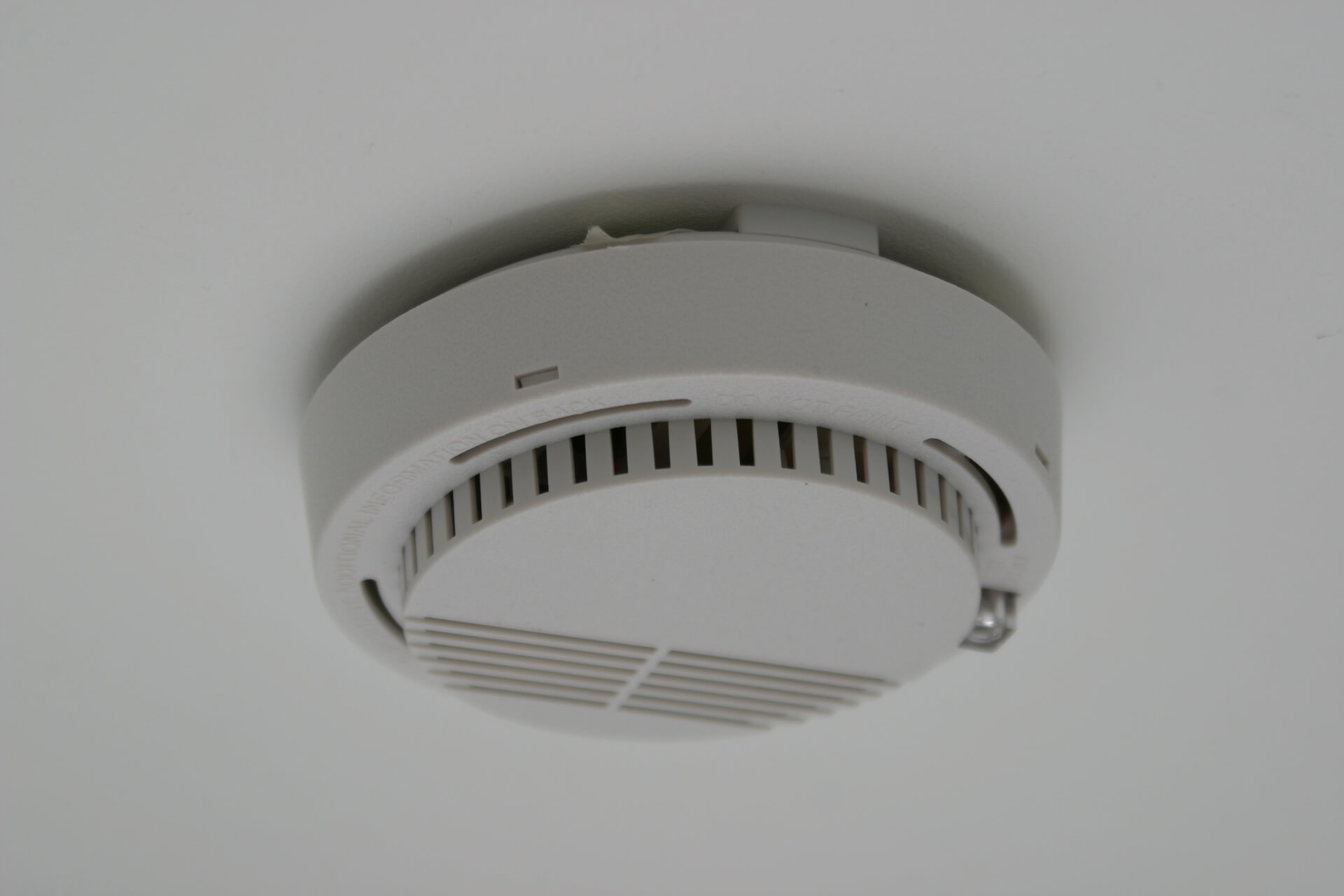Understanding Smoke Detector Placement: Smoke Detector Distance From Bedroom Door

Smoke detectors are essential safety devices that can save lives by providing early warning of a fire. Proper placement is crucial for ensuring their effectiveness in detecting smoke and alerting occupants to a potential fire hazard.
How Smoke Detectors Work
Smoke detectors work by sensing the presence of smoke particles in the air. There are two main types of smoke detectors: ionization and photoelectric.
- Ionization detectors contain a small amount of radioactive material that ionizes the air, creating a small electrical current. When smoke particles enter the chamber, they disrupt this current, triggering the alarm. Ionization detectors are generally more sensitive to fast-burning fires, such as those involving paper or flammable liquids.
- Photoelectric detectors use a beam of light that is scattered by smoke particles. When enough smoke enters the chamber, the light scattering is detected, triggering the alarm. Photoelectric detectors are generally more sensitive to smoldering fires, such as those involving smoldering fabrics or cooking oil.
Importance of Proper Placement
Proper placement of smoke detectors is crucial for ensuring their effectiveness in detecting smoke and alerting occupants to a potential fire hazard.
- Ceiling Placement: Smoke detectors should be mounted on the ceiling, typically at least 4 inches from the wall, to ensure they are positioned in the path of rising smoke. This is because smoke tends to rise, and ceiling-mounted detectors are more likely to detect it early.
- Strategic Locations: Smoke detectors should be placed in strategic locations throughout the home, including bedrooms, hallways, and living areas. This ensures that smoke can be detected quickly and effectively, regardless of where a fire starts.
- Interconnectivity: Consider installing interconnected smoke detectors, which are wired or wirelessly connected to each other. When one detector senses smoke, all connected detectors will sound an alarm, providing a more comprehensive warning system.
Recommended Distance from Bedroom Door

The placement of smoke detectors is crucial for ensuring timely evacuation in case of a fire. The National Fire Protection Association (NFPA) provides specific guidelines for smoke detector placement, emphasizing the importance of early warning systems, especially near bedrooms.
The NFPA recommends installing smoke detectors within 10 feet of every bedroom door. This guideline is based on the principle of early fire detection, ensuring that occupants are alerted to the presence of smoke before it spreads throughout the house. This proximity allows for quicker response times, potentially saving lives and minimizing property damage.
Factors Influencing Placement, Smoke detector distance from bedroom door
The recommended distance of 10 feet from the bedroom door serves as a starting point, but the actual placement can be adjusted based on factors like room size, layout, and potential obstructions.
- Room Size: In larger bedrooms, consider installing additional smoke detectors to ensure adequate coverage. Smaller rooms may require fewer detectors.
- Layout: The layout of the bedroom and its surrounding areas can influence the optimal placement of smoke detectors. Consider the location of doors, windows, and potential fire hazards.
- Obstructions: Furniture, curtains, or other objects can block smoke from reaching the detector. Avoid placing detectors near these obstructions to ensure proper smoke flow.
Additional Factors to Consider

While the distance from the bedroom door is crucial, it’s just one piece of the puzzle when it comes to optimal smoke detector placement. Several other factors play a significant role in ensuring your home is adequately protected. Understanding these additional factors and implementing them correctly will create a comprehensive safety plan for your family.
Selecting the Right Smoke Detector
The type of smoke detector you choose is critical for effective fire detection. Two primary types of smoke detectors exist: ionization and photoelectric.
- Ionization Detectors are more sensitive to fast-burning fires, like those caused by flammable liquids. They work by detecting changes in the ionization of air caused by smoke particles.
- Photoelectric Detectors are more sensitive to slow-burning fires, like those caused by smoldering materials. They work by detecting changes in light caused by smoke particles.
It’s recommended to install both types of detectors in your home, as they offer complementary protection against different fire types. However, if you need to choose only one type, consider the following:
- If you live in a home with a lot of cooking or have pets that may trigger false alarms, a photoelectric detector may be a better choice.
- If you have children or elderly individuals in your home, an ionization detector might be more suitable, as it will detect a fire quickly.
